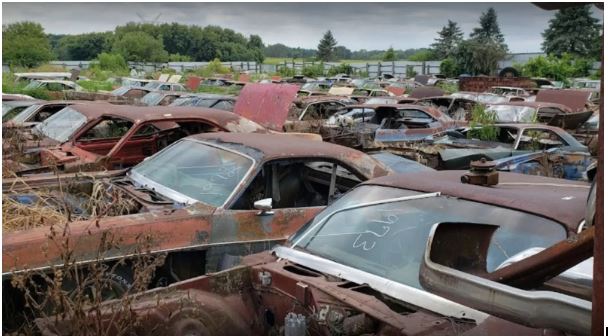In the midst of the towering skyscrapers and bustling streets of the Big Apple, it might be surprising to learn about the existence of junkyards. However, junkyards in NYC play a vital role in the city’s automotive life cycle. These areas, often tucked away in the more industrial parts of the boroughs, house countless vehicles that have reached the end of their road life. Exploring junkyards in New York City can feel like a journey through the city’s vehicular history, where old taxis, family cars, and vintage models sit side by side. Besides serving as final resting places, these junkyards also act as vital hubs for auto parts recycling, offering mechanics and car enthusiasts a chance to find rare parts or even restore old gems. Their presence ensures that the city deals with vehicular waste in an eco-friendly manner, all while providing resources for the local automotive community. Here’s a meticulous guide to lead you.
1. Stage Setting: Beyond First Impressions
- Deep Dive Detailing: Prioritize more than just surface cleaning. Address under-the-hood areas, wheel wells, and even the trunk. An immaculate presentation can bridge valuation gaps.
- Storybook Structuring: Narrate your vehicle’s story methodically. Organize service receipts, annotate any significant events, and ensure a clean, transparent title.
2. Astute Assessments: Grasping the Golden Price
- Holistic Hunting: While platforms like Kelley Blue Book offer general estimates, delve into NY-specific forums and community boards to capture the local sentiment and pricing.
- Eyes on the Ground: Seek appraisals from varied NY auto industry veterans. Their day-to-day interactions can unearth insights not found online.
3. Showcasing Spectrum: Tailoring the NY Pitch
- Dealer Dialogues: Initiate conversations with multiple dealerships. Understand the NY inventory needs, potential trade-in options, and regional buying patterns.
- Buyback Boutique Breakdown: Thoroughly vet any NY-centric car purchasing companies. Look into their transaction timelines, customer reviews, and payout methods.
- Singular Showcases: When listing individually, focus on NY-specific needs. Emphasize attributes like fuel efficiency for city commutes or rugged durability for mountainous terrains.
4. Navigating Nuances: NY’s Regulatory Rigmarole
- Title Triumphs: Cross-reference with the NY DMV guidelines on title transfers. Engage a local notary familiar with automotive transactions to streamline the process.
- Plating Protocols: Understand the NY nuances of plate retention, return, or forwarding to the next vehicle.
- Digital DMV Diplomacy: Leverage the NY DMV’s online portals for quick notifications, verifications, and checks. Being proactive can save you potential future hassles.
5. Transaction Tactics: Perfecting the NY Handover
- Cultural Compass: New York’s rich diversity means dealing with a broad spectrum of buyers. Familiarize yourself with basic etiquettes and be respectful of varied negotiation styles.
- Strategic Staging: Start negotiations slightly above your anticipated price. It gives you room to maneuver and meet potential NY buyers halfway.
- Venue Validation: Opt for locations that are not just safe but also convenient for NY residents. Proximity to public transit or familiar landmarks can make a difference in buyer turnout.
Conclusion Selling a car in New York is both an art and a science. It’s about harmonizing the analytical with the emotional, the generic with the specific. By immersing in this detailed course, you’re equipped to transform your vehicle’s NY chronicle into tangible returns, capturing its essence and value in one seamless transaction.








